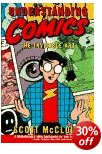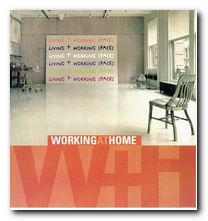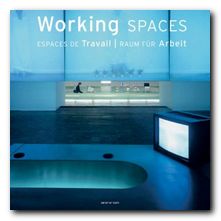traditional, swing, big band, be-bop, modern
Types of jazz
Jazz was born in New Orleans. It was a fusion of folk music, hymns, marching bands and ragtime music. The earliest musicians played military instruments left over from the Civil war – ones that were easily portable for the funeral parades in which they played a prominent role. It started at the beginning of the twentieth century and was known as ‘Dixieland’ – from the name given to the southern states of the USA. Since that time, the types of jazz have diversified.
The lead instruments were normally the trumpet or cornet, the clarinet, and the trombone. The rhythm and harmonic structure was provided by guitar or banjo, a tuba or Sousaphone, and drums. When the music passed from the streets to the dance halls and drinking clubs where it flourished, this supporting function might be provided by piano and double string bass.
The essence of traditional jazz is that a lead instrument will play the melody of a tune, and then improvise on it, whilst other instruments in the ‘front line’ will play variations or paraphrases of it at the same time. This creates a polyphonic effect. which is sustained whilst other instruments take their turn to improvise their solos.
The melodies played by such groups all tended to be well known by the players, so there was no requirement for written scores.
George Lewis New Orleans Jazz Band
Mahogany Hall Stomp
Swing
This began in the 1930s and featured a strong emphasis on the rhythm section, which comprised piano, double string bass, and drums – with the occasional addition of a guitar. The front line instruments might be any combination of trumpet, saxophone, clarinet, trombone, or even violin.
Many swing bands were led by an outstanding instrumentalist, such as Benny Goodman (clarinet), Tommy Dorsey (trombone), and Artie Shaw (clarinet). They played for a mixture of dancing and concert performances, and became very popular with the spread of radio throughout the United States.
Because there were more musicians in the group, more formality in the structure of the performance was required. Music was arranged and written down, and players often supported an improvisation from the star player. However, the musicians might be playing the same tunes night after night at separate concerts, and could eventually dispense with the written scores.
Some groups also used ‘head’ arrangements: that is, patterns of playing which were improvised and then committed to memory by the entire band.
Duke Ellington Orchestra
‘Old Man Blues’ from the 1930 movie ‘Check & Double Check’
Big band jazz
As the name suggests, big bands feature multiple numbers of trumpets, trombones, and saxophones, plus piano, double bass and drums to provide rhythm and harmonic support. These large orchestra-sized combinations were popular from the 1930s up to the late 1950s when they played either for dancing or in concert performances.
What made them different from other forms of jazz is that the tunes they played were heavily arranged and elaborated – either by the bandleader or a professional arranger. The musicians played from written music, with deliberately orchestrated gaps during which a featured performer would improvise a solo.
These bands commonly supported singers, and often featured music played at loud volume, with screeching trumpets and noisy drum solos.
Woody Herman Band (1948)
‘Caledonia’ + ‘Northwest Passage’ – featuring Jimmy Raney (g), Stan Getz (ts), Al Cohn (ts), Shorty Rogers (t), Zoot Sims (ts), Serge Chaloff (bs) Don Lamond (ds)
Be-Bop
This form of modern jazz arose in the early 1940s. It was generated by musicians who had acquired a high degree of proficiency working in dance bands, but who wished to extend jazz music technically and harmonically.
It is characterized by tunes played at fast tempo, instrumental virtuosity, and improvisations based on the harmonic structure of popular songs, some of which were given entirely new melodies. The classic instrumental format was piano, bass, and drums, with two lead soloists – on trumpet and saxophone.
The rare archive material below exemplifies all these characteristics. The tune is ‘Hot House’, written by Tadd Dameron but based on the harmonies and structure of Cole Porter’s ‘All the Things You Are’. After the solos it also illustrates the feature of musicians taking alternate four bars of the song as it progresses – called ‘trading fours’.
Hot House (Tadd Dameron)
Dizzy Gillespie (t) and Charlie Parker (as) George Shearing (p) Stan Levy (ds)
Modern jazz
This term is so wide it has almost lost any meaning. It can describe just about any jazz music of the post-1945 period, which could be played in any number of styles. But it is perhaps best used to denote the products of the late 1950s and early 1960s when it entered its most fertile period of invention.
Instrumentation retained what had become the classic quintet format of piano, bass, drums, and two lead horns. And the approach to musical content remained focussed on playing a melody, then improvising on its harmonies.
However, around this time some musicians started to use modal concepts of harmony, which meant using scales rather than a sequence of chords. Two of the main exponents of this approach were Miles Davis and John Coltrane. The video that follows features one of the earliest compositions of this klind – So What. In the years that followed, both musicians went on to develop this approach much further.
So What (M. Davis)
Miles Davis (t) John Coltrane (ts) Jimmy Cobb (ds) Paul Chambers (bs)
© Roy Johnson 2011
More on music
More on media
More on lifestyle




